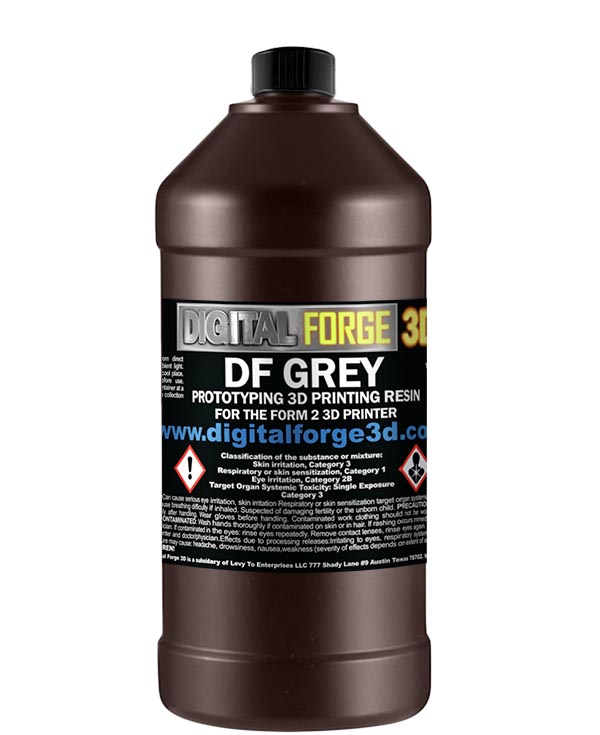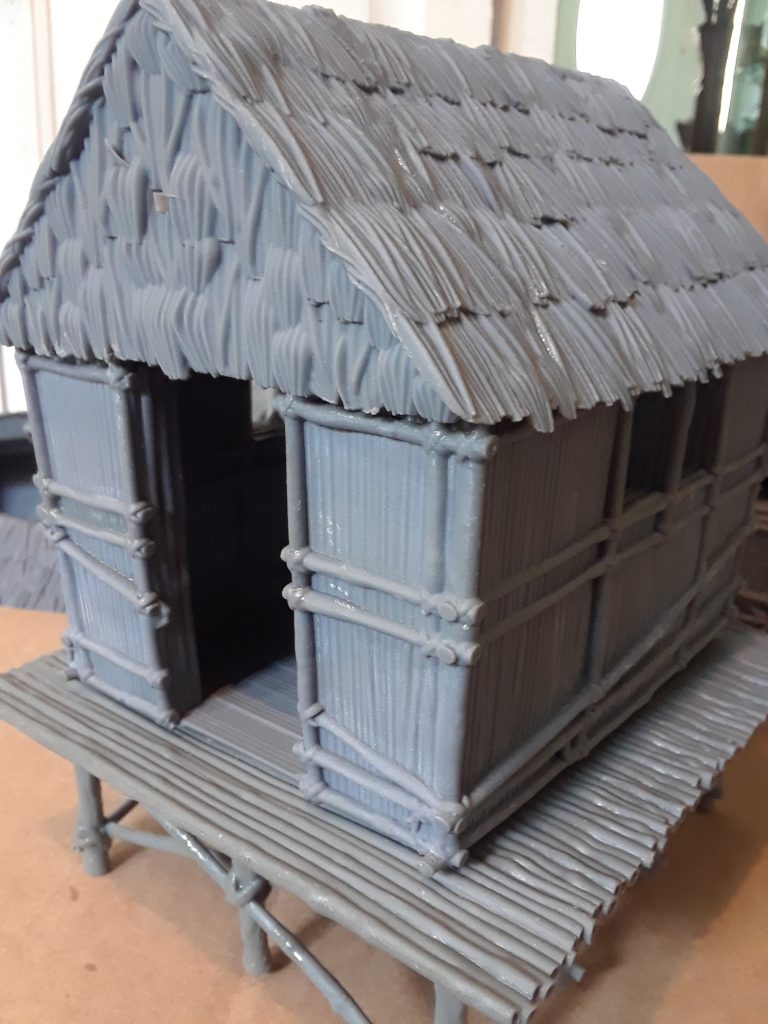Lately, I’ve been super intrigued by the open and closed ecosystems in 3D Printing. On the one hand, you have very top-down arrangements that Stratasys, 3D Systems, and Formlabs have where everything is very Apple-like. Nice smooth experiences and the materials, software, and printers are all dialed in. Everything works in concert with each other but the prices of consumables are typically high. The contrast to that is the sloppy, chaotic, uncoordinated open FDM ecosystem where there’s a lot of choice but little refinement. Open FDM is a cacophony, a chaotic school kids lunch hour of a thing while these closed ecosystems are sedated chamber orchestras guided by the ticking of the conductor’s baton. I see these two systems very much in contrast to each other. At the moment if you want cheap parts then open chaos is your choice while ease of use will always be better with the closed ecosystems.
Then I get an email from the Collector’s Showcase, a company that makes painstakingly finished military miniatures. They’ve deployed Formlabs 3D printers to manufacture miniatures and now have come up with their own resin. To go from making collectibles to making your own resin and putting it on the market is an unexpected step to make the least. I then also learn that this company is 3D printing rather a lot of these miniatures and that they’re reshoring some of their manufacturing to the US from China. This was more than enough fuel for me to interview of Collector’s Showcase and also of DigitalForge3D the new low-cost Formlabs resin vendor. We talked to Brian Levy of Digital Forge3D to find out more.
How does a collectibles company end up making resin?
As prices have risen in China for our productions we knew we’d have to move some production back to the US. Using 3D printers for the production was a natural for us as we’d been creating 3D prototypes for years. But having calculated the price of our models relative to FormLabs material price we knew it would be absolutely impossible to use their resin for the 3D print manufacturing studio we wanted to start. Don’t get me wrong their resins are excellent with great attributes. However they are priced for prototyping only not production. So we hired on material chemists that had extensive backgrounds in uv curable resin manufacturing to create our own. It took about six months until we developed a formulation that emulated the best properties of the FormLabs Grey resin. We were able to develop this resin at a price point that made manufacturing with the Form2 viable. In other words our part cost gelled with our wholesale pricing formula perfectly.

Why do you use 3D printing in the first place?
“Brian, one of the main principles in the company, came from the 3D product development side (working in the video game industry since the late 90’s). And we’ve been using 3D modeling tools with 3D printing tools for years. In fact, this marriage made some of the success of TCS possible. While most companies were still hand sculpting prototypes in China TCS was making and printing them in 3D from the onset, saving time and money.”
Why are you moving production back to the states?
“Pricing at China factories has begun to overshoot the cost of components that we need to run our business. This has a lot to do with “hot money” that the government has been printing to continue to goose their economy. This “hot money” has created a lot of local inflation. In other words we simply can’t afford to work solely with China as a lot of china factories have simply priced themselves out of the market. The 3D print revolution, while quite nascent, is at an adequate entry point for domestic manufacturing. We find that some part sets are actually cheaper than manufacturing in China!”

Why grey resin?
“Grey is a classic color that personifies “chiaroscuro” or light and shadow in visually measuring the correctness in various shapes. In addition, it’s a fabulous color for an initial paint surface as its medium undertones never detracts from the primary part color.”
How much is it and what is the performance like?
“The new Grey is the most cost effective material for the Form2 out there. We priced it at $79.00 a liter but added extensive price breaks if it’s ordered in quantity. In fact we’ve been shipping pales and even drums of it to individual customers with greater discounts. Our competitors really can’t even compete. For instance we have one particular competitor that prices their liters lower at $70.00 per. But the actual cost is much more. That’s because an extra 40% of their material sticks to parts like glue: only to be washed away in the alcohol bath never to be seen again. Unfortunately, this competitor packs a heavy weight dilutant into their formulation that has adverse properties. Sadly it’s hard for customers to notice the loss as most are just using it for prototyping. Customers actually get half the number of parts from our competitor than they would from our formulation.”
How many parts do you print with it?
“We have quite a few Form2’s so we’ll do runs as low as 500 pieces to over 1000. The Form2 is an incredible printer. Elegant in its basic composition and being on its third iteration it’s almost bulletproof. We simply replace the PDMS coating now and again and the machines do the rest.”

Is that viable, aren’t labor costs high-cost components?
“Absolutely, we wouldn’t want to manufacture items in the US that have a lot of labor time in decoration (painting). That’s why we stick to items like vehicle models and structures. We do still keep a lot of work that requires hand painting overseas. But as 3D color printing moves to the fore in the years to come that should change too.”
How does the production work step by step?
“It’s much the same as in China but instead of making solid polyresin models as they do in latex molds, we create what we call “hollows” in our 3D printers. The hollow structures are about 2-3 millimeter in thickness and then are filled with ballast. This creates a heavy solid piece but with a fraction of the resin cost had we printed it as a solid.”
Do you see more people using Formlabs printers to manufacture?
“I think Formlabs machines are an excellent entry point for batch manufacturing. The thing that’s prevented most batch manufacturing from occurring has been the cost of UV curable resin. But this is a problem we’ve solved with our new resin. It’s customers that come to us for 20 liter pales and 60 liter drums that have been able to set up large-scale manufacturing with the Form2.”
Do you think other hardware manufacturers will work towards manufacturing printers?
“We know of several 3D print manufacturers that are in development right now working towards that goal. We can easily envision the next generation of 3D SLA manufacturing printers that print faster, with fewer supports and are even cheaper to run. So the future looks quite bright for boutique manufacturers wanting to set up shop on their own.”
What would lower costs for you when using 3D printing to manufacture?
“Of course, material cost had been the biggest budgetary issue for us and we hope we can get our formulation costs down even more. I would also say better VAT’s that perhaps don’t require so many PDMS window swap outs would be second.”
So there is a third option besides open and closed, a half-open ecosystem. What does this mean for Formlabs? Will they sell less photopolymer resin because of this? Or wil they sell more 3D Printers? Does it mean that it has just become more attractive to manufacture with Formlabs’ machines? Does DigitalForge3D harm them because they’re competing with a very profitable part of the Formlabs ecosystem? Or will the company enable them by bringing more innovation to its platform? Will we see this happening time and time again with other companies snapping away at parts of the ecosystem? I see this as a real risk to companies that have opted for the traditional razor and blades model whereby the consumable causes the profit and the initial item is low margin. A company that relied too much on one element of their ecosystem to generate money may be doomed if this happens. It would be advisable to make money on the machine and also perhaps to have recurring service revenue to offset any possible decline in material usage. I’m not sure what our industry will turn out to look like but look forward to finding out.
Subscribe to Our Email Newsletter
Stay up-to-date on all the latest news from the 3D printing industry and receive information and offers from third party vendors.
You May Also Like
Gorilla Sports GE’s First 3D Printed Titanium Cast
How do you help a gorilla with a broken arm? Sounds like the start of a bad joke a zookeeper might tell, but it’s an actual dilemma recently faced by...
Nylon 3D Printed Parts Made More Functional with Coatings & Colors
Parts 3D printed from polyamide (PA, Nylon) 12 using powder bed fusion (PBF) are a mainstay in the additive manufacturing (AM) industry. While post-finishing processes have improved the porosity of...
$25M to Back Sintavia’s Largest Expansion of Metal 3D Printing Capacity Since 2019
Sintavia, the digital manufacturing company specializing in mission-critical parts for strategic sectors, announced a $25 million investment to increase its production capacity, the largest expansion to its operations since 2019....
Velo3D Initiates Public Offering in a Bid to Strengthen Financial Foundations and Drive Future Growth
Velo3D (NYSE: VLD) has been among a number of publicly traded 3D printing firms that have attempted to weather the current macroeconomic climate. After posting a challenging financial report for 2023,...





























